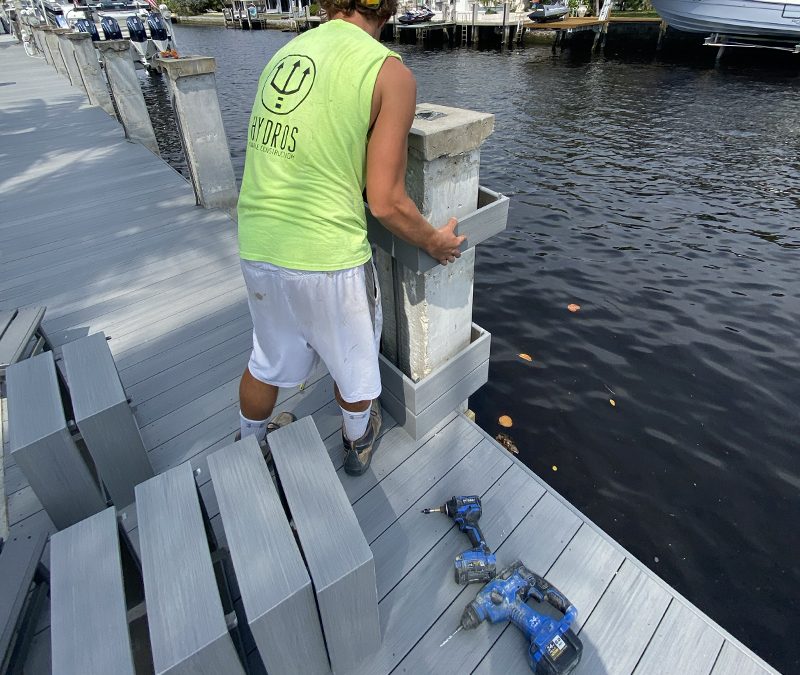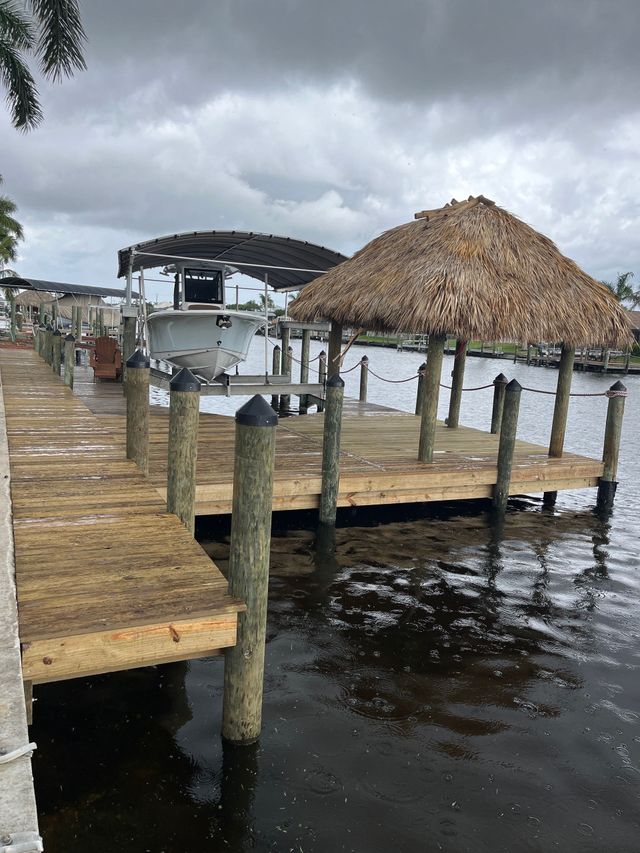The Value of Timely Dock Repairs for Waterfront Safety And Security
The Value of Timely Dock Repairs for Waterfront Safety And Security
Blog Article
Efficient Dock Repair Service Techniques: Making Sure Structural Stability
Making certain the structural stability of docks with effective repair work strategies is extremely important for the durability and security of aquatic centers. This involves a multi-faceted strategy starting with extensive assessments making use of innovative innovations like finder tools and remotely operated vehicles (ROVs) to identify both visible and concealed damages. Consequently, selecting the ideal fixing products, such as composite products and corrosion-resistant alloys, is essential for resilience. Architectural reinforcement approaches, including the application of cross-bracing systems and load-distribution plates, play an essential function in mitigating anxiety factors. The significance of these strategies ends up being evident when checking out innovative repair methods and preventative maintenance methods.
Assessing Dock Damage
Analyzing dock damages is an essential very first step in making certain the structural stability and safety and security of any docking facility. This first analysis includes a comprehensive assessment to identify both visible and surprise problems. Key elements to examine include the dock's foundation, pilings, decking, and hardware. Each part should be looked at for indications of wear, rot, rust, or other kinds of degradation that might compromise the architectural integrity.
Structural designers or certified inspectors typically carry out these evaluations making use of specialized strategies and devices. For circumstances, underwater evaluations may employ finder devices or from another location operated automobiles (ROVs) to spot immersed damages. Over water, visual inspections are enhanced by utilizing wetness meters and various other diagnostic tools to discover underlying issues not quickly visible to the naked eye.

Deciding On Repair Work Materials
Selecting the appropriate repair work products is a pivotal action in the dock reconstruction process, one that directly influences the longevity and efficiency of the repaired framework. Product choice must be driven by aspects such as environmental conditions, load-bearing demands, and compatibility with existing dock components.
Along with wood, composite materials are increasingly preferred because of their resilience and low upkeep needs. Compounds, generally made from a blend of plastic and wood fibers, supply outstanding resistance to rot, insects, and UV damages. For steel docks, selecting corrosion-resistant alloys such as galvanized steel or marine-grade aluminum is important to avoid rust and make certain structural stability in saline water conditions.
Epoxy materials and marine-grade sealants are essential for repairing fractures and sealing joints, giving a water-proof barrier and enhancing the dock's total toughness. By carefully picking high-grade products, dock repairs can accomplish long-lasting outcomes, consequently securing versus future deterioration and ensuring secure, reliable usage.
Architectural Support Methods
Efficient architectural reinforcement methods are critical in guaranteeing the stability and durability of dock fixings. One basic approach involves the usage of steel or composite support bars (rebar) within concrete frameworks. Rebar gives added tensile stamina, avoiding cracks and dispersing tons more evenly. This method is specifically efficient for docks subjected to heavy lots or extreme environmental problems.
Another crucial technique is the application of fiber-reinforced polymers (FRP) These products supply high strength-to-weight ratios and outstanding resistance to rust, making them excellent for read what he said reinforcing concrete or wooden docks. FRP can be applied in sheets or strips and adhered with epoxy materials to enhance architectural integrity.
Bracing and anchoring systems additionally play a vital role in architectural support. Cross-bracing, making use of steel or wood beam of lights, can combat lateral pressures, decreasing guiding and motion. Securing systems, such as helical piers or driven piles, supply a steady foundation by transferring loads to deeper, more secure soil layers.
Last but not least, the assimilation of load-distribution plates can help distribute weight extra uniformly throughout the dock's surface, mitigating local tension factors. These techniques jointly guarantee that anchors stay robust and risk-free, capable of enduring the rigors of their functional atmosphere.
Advanced Repair Service Methods

An additional review advanced method includes underwater welding, which enables for repair services to be carried out without the requirement to dewater the area. This approach is particularly helpful for addressing structural problems in submerged dock parts, guaranteeing minimal disturbance to procedures. Improved welding techniques, paired with robot systems, deliver accuracy and reliability, consequently expanding the lifespan of the dock.
In addition, cathodic protection systems are implemented to avoid corrosion in metallic dock structures. By making use of sacrificial anodes or satisfied current systems, these techniques successfully alleviate the electrochemical processes that bring about product deterioration.
Last but not least, advanced surveillance technologies, such as architectural health tracking (SHM) systems, offer real-time data on the condition of dock frameworks. These systems enable aggressive maintenance and timely interventions, inevitably making certain the long-lasting architectural stability of the dock.
Maintenance and Prevention
Upkeep and avoidance are essential principles that underpin the longevity and safety of dock frameworks. Routine examinations are extremely important, enabling early discovery of wear and tear, prospective weak points, and ecological impacts. An aggressive technique, entailing routine look for corrosion, rot, and architectural changes, minimizes costly repair work and lengthens the dock's operational life.
Safety nets should include using safety coatings to metal elements to safeguard against corrosion and using cured timber to withstand decay. Additionally, ensuring appropriate water drainage and air flow can prevent water buildup, which is a common root cause of structural degradation. Including quality products and sticking to producer standards during building and construction and repair phases additionally play vital functions in improving toughness.

Training personnel in dock upkeep best methods ensures constant application of safety nets. Leveraging technological breakthroughs, such as drones for evaluations and sensing units for real-time monitoring, can better enhance maintenance initiatives. By prioritizing maintenance and avoidance, dock proprietors can ensure structural integrity, functional safety, and economical management over the dock's life-span.
Final Thought
To conclude, preserving the architectural integrity of aquatic centers necessitates extensive dock repair work techniques. Extensive evaluations making use of advanced tools uncover both noticeable and hid damages, while the choice of appropriate repair service products boosts longevity. Executing structural support methods addresses tension factors properly. Advanced repair work techniques, combined with normal maintenance methods, ensure the dock continues to be risk-free and operational under diverse ecological problems. Embracing these techniques dramatically extends the website link lifespan and capability of marine facilities.
Making certain the structural stability of docks through effective repair work methods is paramount for the long life and security of marine facilities.Choosing the suitable repair products is an essential action in the dock reconstruction procedure, one that directly influences the longevity and performance of the repaired structure.Reliable architectural support techniques are crucial in guaranteeing the stability and longevity of dock repairs. By prioritizing maintenance and prevention, dock proprietors can guarantee structural honesty, functional safety, and cost-efficient administration over the dock's life expectancy.
In verdict, keeping the structural stability of marine centers necessitates detailed dock repair work methods.
Report this page